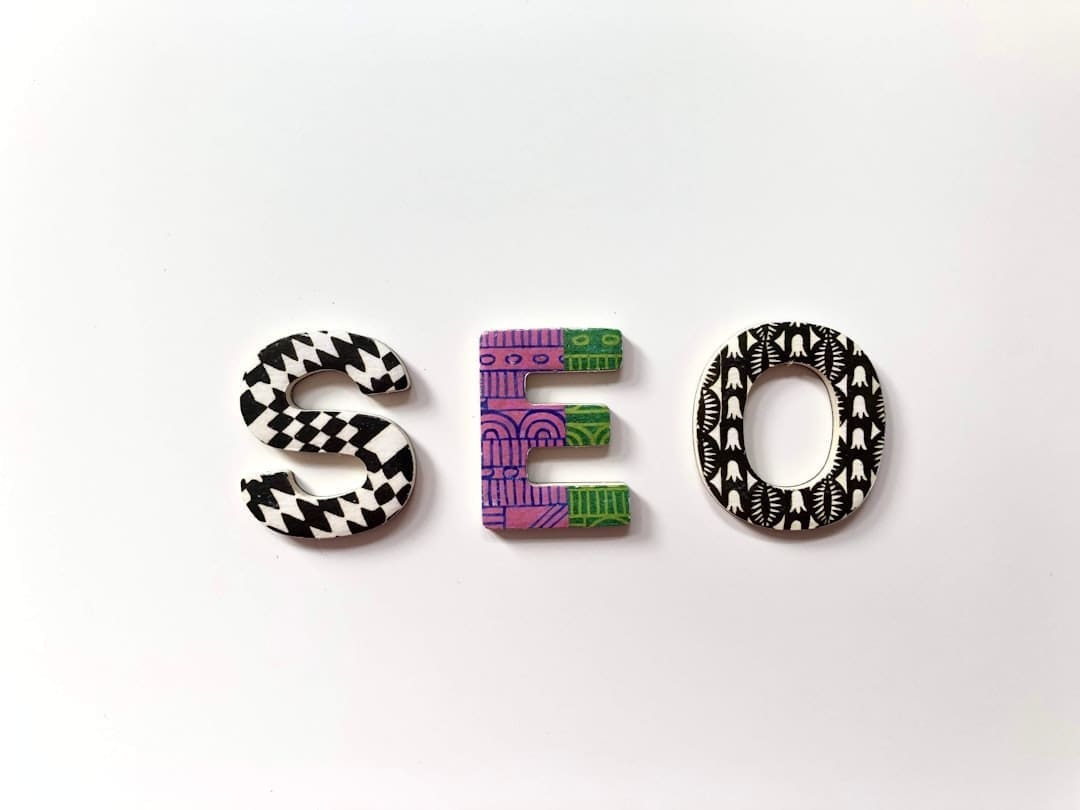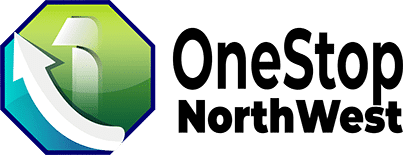
Introduction
Mastering SEO digital marketing is no longer just an option for small business owners; it’s a necessity. In its essence, SEO (Search Engine Optimization) is what makes your business visible online to your target audience. Imagine SEO as the signpost that directs customers to your shop in the immense online marketplace. On the other hand, Digital Marketing extends this concept by utilizing various online platforms to promote your business, ensuring that when customers search for your products or services, they find you first and not your competitor.
SEO Basics and the Importance of Digital Marketing cannot be overstated. With the right SEO strategies, your website can rank higher on search engine results pages, leading to more traffic and potential sales. Digital marketing leverages this by engaging with your audience across multiple channels, from social media to email marketing, making sure your business is seen, heard, and remembered.
- SEO helps your business grow organically online, ensuring long-term success.
- Digital Marketing spreads your brand’s message wider and more effectively than traditional marketing methods.
In a nutshell, integrating SEO with your digital marketing strategy is key to not only surviving but thriving in the online world. This synergy between SEO and digital marketing forms a foundation upon which to build your online presence, driving both traffic and conversions.

By understanding and applying the basics of SEO in harmony with a comprehensive digital marketing strategy, small business owners like you can significantly enhance your visibility online, attract more customers, and ultimately, achieve your business goals more efficiently.
Understanding SEO in Digital Marketing
When diving into SEO digital marketing, it’s like piecing together a puzzle. Each piece, from keywords to link building, plays a crucial role in how well your website performs in search engine results. Let’s break down these pieces to see how they fit together.
Keywords: The Starting Point
Think of keywords as the questions people type into search engines. Your job is to answer these questions on your website. By researching and using the right keywords, you tell search engines, “Hey, I have the answers!” This helps your site show up when people search those terms.
Page Title: Make a Strong First Impression
The page title is the first thing people see in search results. It’s like the headline of a newspaper article. Make it catchy and clear, so people want to click. Include your main keyword here to show relevance to the search query.
Page URL: Keep It Clean and Clear
Your page URL should be simple and include your keyword if possible. Think of it as the address to your content. A clean URL helps both search engines and users understand what the page is about before they even visit it.
Meta Description: Your Mini Ad
The meta description is a brief summary that appears under your page title in search results. It’s your chance to convince someone to click on your link. While it doesn’t directly affect your ranking, a compelling meta description can improve your click-through rate.
H1 Text: The Main Headline
Just like a title to a chapter in a book, the H1 text is the main headline on your page. It should clearly tell both users and search engines what the page is about. Including your target keyword in the H1 can help with relevance.
Content Optimization: Quality and Relevance
Content optimization is about making your page’s content useful and engaging for visitors. Use your keywords naturally, answer questions, and provide value. The better your content, the more likely people are to stay, link to it, and share it.
Link Building: Establishing Authority
Link building is the process of getting other reputable websites to link to your site. Think of each link as a vote of confidence. The more high-quality backlinks you have, the more authoritative your site appears, which can boost your rankings.
Rank Monitoring: Keeping an Eye on Performance
Rank monitoring is about tracking how your pages perform in search results over time. Use tools to see where you rank for different keywords. This helps you understand what’s working and what needs improvement.
By focusing on these key aspects of SEO, you’re laying a solid foundation for your digital marketing strategy. SEO is not a one-time task but an ongoing process. As search engines evolve, so should your strategies. Keep learning, adapting, and optimizing to stay ahead in the game.
Now that we’ve covered the basics, let’s move on to the different types of SEO and how they can further enhance your digital marketing efforts.
Types of SEO
In SEO digital marketing, there are three main players that you need to know: On-page SEO, Off-page SEO, and Technical SEO. Just like a three-legged stool, each type is critical for stability and success. Let’s break them down in simple terms.
On-page SEO
Imagine you’re inviting guests over to your house. You want to make sure it’s clean, welcoming, and everything is in its place. On-page SEO is like preparing your website for search engine visitors. It’s all about making your site’s pages look attractive to Google and other search engines. Here’s what you focus on:
- Keywords: These are the words or phrases people type into search engines. You sprinkle these throughout your website’s content wisely.
- Page Titles and Meta Descriptions: Think of these as your pages’ introduction to search engines and your visitors. They tell everyone what to expect.
- Content Quality: Your website needs to have useful and original information. This makes visitors happy and search engines too.
- Image Optimization: Pictures are great, but they need to be fast-loading and tagged correctly so search engines understand them.
Off-page SEO
Now, think about how people talk about your house when they’re not there. Off-page SEO is the reputation your website has on the internet. It’s what others say about your site. The big focus here is on:
- Backlinks: These are links from other websites back to yours. It’s like having friends vouch for you; the more reputable the friend, the better.
- Social Media: While not a direct ranking factor, being talked about on social media signals to search engines that people find your content valuable.
- Brand Mentions: Sometimes, even if a site doesn’t link back to you, just mentioning your brand is enough to give you a boost.
Technical SEO
Lastly, imagine your house’s foundation, plumbing, and electrical systems. They’re not always visible, but everything depends on them working right. Technical SEO makes sure your website’s structure is in tip-top shape for search engines to crawl and index. Key areas include:
- Site Speed: If your site is slow, visitors will leave, and search engines will notice. Fast-loading pages are a must.
- Mobile-Friendliness: With more people using smartphones to browse the internet, your site must look good on all devices.
- Security (HTTPS): A secure site protects users’ information and is a ranking factor for Google.
- Crawlability: This is about making it easy for search engines to read and understand your site. A sitemap and a robots.txt file are tools that help with this.
By focusing on these three types of SEO, you’re covering all bases: making your site appealing to visitors (On-page SEO), building its reputation on the internet (Off-page SEO), and ensuring it’s built on a solid foundation (Technical SEO). Each type supports the others, and together, they form a comprehensive SEO digital marketing strategy that can help your website attract more visitors, rank higher in search results, and ultimately, achieve your business goals.
Remember that these SEO types are not one-and-done tasks. They require ongoing attention and adjustment as search engines update their algorithms and as your website grows and changes. Next, we’ll dive into specific SEO techniques that can help you succeed in each of these areas.
SEO Techniques for Success
In the journey of SEO digital marketing, mastering a few critical techniques can significantly boost your website’s performance. Let’s dive into some strategies that are essential for success.
Site Load Time
Imagine waiting for a page to load, and it takes forever. Frustrating, right? That’s how your visitors feel if your site is slow. Google loves fast websites, and so do users. A fast-loading site can improve your rankings and keep users happy.
- Quick Tip: Compress images and use a content delivery network (CDN) to speed things up.
Mobile-Friendliness
With more people using smartphones to browse the internet, your site must look good on small screens. A mobile-friendly site adjusts to any device, providing a great user experience.
- Remember: Google uses mobile-first indexing, meaning it looks at your mobile site first for ranking.
Crawl Error Identification
Search engines use bots to crawl your website. Sometimes, they hit a roadblock, like a broken link. Identifying and fixing these errors ensures search engines can index your site properly.
- Action Step: Use tools like Google Search Console to find and fix crawl errors.
Keyword Cannibalization Audit
When multiple pages target the same keyword, they cannibalize each other’s chances to rank. It confuses search engines about which page to prioritize.
- Strategy: Audit your content to ensure each page targets a unique keyword.
Duplicate Content Audit
Duplicate content confuses search engines and can dilute your rankings. It’s when the same content appears on multiple pages within your site.
- Solution: Use canonical tags to tell search engines which version of a page is the master copy.
Site Structure
A well-organized site helps users and search engines find content easily. A clear hierarchy and simple navigation improve the user experience and SEO.
- Best Practice: Plan your site structure carefully, using categories and subcategories logically.
Implementing these techniques requires patience and persistence. SEO is not about quick wins but building a solid foundation that supports long-term success. As you refine these aspects of your site, you’ll likely see improvements in your search rankings, user engagement, and overall site performance.
Moving on, let’s explore how to integrate these SEO techniques into your broader digital marketing strategy to drive business growth and outperform your competition.
Implementing SEO in Your Digital Marketing Strategy
Integrating SEO into your digital marketing strategy isn’t just a good idea; it’s essential for connecting with your audience and boosting your online presence. Let’s dive into how you can make SEO work for you, from keyword research to analytics.
Keyword Research
Think of keyword research like a treasure hunt. You’re searching for the phrases your customers use when they’re looking for what you offer. Start with tools like Google’s Keyword Planner. Look for keywords with high search volume but low competition. This is your map to hidden treasure.
- Tip: Don’t just look for single words. Phrases or questions your audience might ask are golden.
Content Creation
Now, use those keywords to craft content that answers your audience’s questions or solves their problems. Whether it’s blog posts, videos, or infographics, your content should be engaging and valuable.
- Remember: Quality beats quantity. A well-researched, in-depth article is more valuable than ten quick posts that don’t really say much.
Backlinks
Backlinks are like votes of confidence from other websites. The more reputable sites linking to yours, the more search engines trust you. Reach out to bloggers, journalists, and industry leaders. Offer them valuable content they’ll want to share with their audience.
- Strategy: Guest blogging on reputable sites in your industry is a great way to build backlinks.
Social Media
Social media doesn’t directly impact SEO rankings, but it’s a powerful tool for boosting your content’s visibility. Share your content on social media platforms where your audience hangs out. Engage with your followers. The more your content is shared, the more traffic you drive to your site.
- Engage: Ask questions, run polls, and participate in conversations to increase engagement.
User Experience
A great user experience keeps visitors on your site longer, reducing bounce rates and improving rankings. Ensure your site is easy to navigate, loads quickly, and is mobile-friendly.
- Check: Use Google’s PageSpeed Insights to see how you can improve your site’s loading time.
Analytics and Reporting
Finally, you can’t improve what you don’t measure. Use tools like Google Analytics to track your site’s performance. Look at metrics like organic traffic, bounce rate, and conversion rate. This data tells you what’s working and what needs tweaking.
- Action: Set up monthly reporting. Regularly review your metrics to understand the impact of your SEO efforts.
Implementing SEO in Your Digital Marketing Strategy is about more than just ticking boxes. It’s about creating a seamless, integrated approach that enhances every interaction your audience has with your brand online. By focusing on keyword research, content creation, backlinks, social media, user experience, and analytics, you’re laying down a foundation for sustainable growth and success in the digital arena.
Next, we’ll explore how leveraging SEO can drive organic traffic, enhance brand visibility, give you a competitive edge, and improve your return on investment.
Leveraging SEO for Business Growth
Organic Traffic
Imagine your website as a shop in a bustling market. The more people walk past and notice your shop, the more likely you are to get customers. In the digital world, organic traffic is those potential customers. It’s the people who find your website through a search engine without you paying for ads. By using SEO digital marketing strategies, you’re essentially placing your shop in the busiest part of the market where everyone can see it. One study showed that the first page of Google captures up to 92% of search traffic clicks. That’s a lot of eyes on your website!
Brand Visibility
When people keep seeing your website at the top of their search results, they start to recognize your brand. It’s like seeing the same billboard every day on your way to work. Eventually, you remember it. High rankings in search results mean that when people search for something related to your business, your name pops up. This constant visibility builds trust. After all, if Google trusts you enough to rank you high, why shouldn’t they?
Competitive Advantage
Think of the internet as a race where the prize is the attention of potential customers. By investing in SEO, you’re giving your business a head start. If your competitors are not using SEO effectively, they are starting behind you in the race. Even if they are using SEO, the goal is to do it better. By focusing on elements like site load time, mobile-friendliness, and quality content, you’re not just matching your competitors; you’re outpacing them.
ROI Enhancement
SEO is not just about getting more visitors to your website; it’s about getting the right visitors. These are the people who are looking for exactly what you offer and are ready to engage with your business. By targeting specific keywords and creating valuable content, you’re attracting potential customers who are further down the sales funnel. This targeted approach means that the traffic from SEO is more likely to convert into sales, leading to a higher return on investment. In fact, SEO leads have a 14.6% close rate, compared to only 1.7% for outbound leads like print advertisements.
In conclusion, leveraging SEO in your digital marketing strategy is about more than just improving your website’s ranking on search engines. It’s about placing your business in the spotlight, building trust with your audience, outsmarting your competition, and ultimately, driving growth and profitability. With the right approach, the benefits of SEO can be a game-changer for your business.
Next, we’ll dive into some of the most common questions about SEO digital marketing to help you understand how to make the most of this powerful tool.
Frequently Asked Questions about SEO Digital Marketing
Navigating SEO digital marketing can be like exploring a new city without a map—exciting but a bit overwhelming. Let’s simplify it with answers to some frequently asked questions.
How do I start SEO digital marketing?
Starting SEO digital marketing is like planting a garden. First, you need to understand the soil (your market) and choose the right seeds (keywords).
- Keyword Research: Use tools like Google Keyword Planner to find words your customers are searching for.
- Optimize Your Website: Make sure your site’s titles, headings, and content include your keywords.
- Content Creation: Write helpful, original content that answers your audience’s questions.
- Build Links: Reach out to other websites to link back to your content, increasing your site’s authority.
- Track Your Progress: Use Google Analytics to monitor your traffic and see what’s working.
What is an example of SEO?
Imagine you run a bakery specializing in gluten-free treats. An example of SEO would be optimizing your website to rank for searches like “gluten-free bakery near me” or “best gluten-free cupcakes.” This involves:
- Creating content around gluten-free baking tips and recipes.
- Ensuring your website mentions your location for local searches.
- Getting other food blogs or local directories to link to your site.
As your site begins to rank higher for these terms, more potential customers find your bakery when they search for those keywords.
What are the SEO techniques?
SEO techniques can be broadly categorized into three pillars:
-
On-Page SEO: This includes optimizing your content for target keywords, using proper headings (H1, H2, etc.), and ensuring your website provides a good user experience.
-
Off-Page SEO: This focuses on building your website’s reputation through backlinks from other reputable sites, social media marketing, and other external efforts.
-
Technical SEO: This involves improving site speed, making your site mobile-friendly, ensuring it’s easily crawlable by search engine bots, and fixing any crawl errors.
Each of these techniques helps search engines understand and rank your website more effectively, driving more organic traffic to your site.
SEO is a marathon, not a sprint. It takes time, patience, and consistent effort to see results. But with the right approach, SEO can significantly enhance your digital marketing strategy, leading to long-term business growth and success.
Next, let’s explore how leveraging SEO can drive business growth and give you a competitive edge in the digital marketplace.
Conclusion
Mastering SEO digital marketing is not just an option; it’s a necessity. Throughout this guide, we’ve explored the multifaceted world of SEO and how it integrates into a broader digital marketing strategy. From understanding keywords to implementing technical SEO, each step is crucial in carving out a visible space for your brand in the crowded online marketplace.
At OneStop Northwest, we understand the challenges and opportunities that come with SEO digital marketing. Our journey together does not end here. We see this as the beginning of a partnership where we navigate the complexities of digital marketing together, ensuring your business not only reaches its target audience but thrives online.
SEO is an changing field, with search engines constantly updating their algorithms and preferences. Staying ahead of these changes can be daunting. That’s where we step in. Our team of experts is dedicated to keeping up with these shifts, ensuring your digital marketing strategy remains effective and your business stays ahead of the curve.
SEO is more than just a series of tasks; it’s about creating a better online experience for your customers and building a digital presence that stands the test of time. It’s about making your website not just visible, but valuable to those who visit it.
We invite you to explore our range of services and discover how OneStop Northwest can help your business achieve its online potential. Whether it’s increasing website traffic, improving search engine rankings, or boosting conversions, our focus is on delivering measurable results that drive growth.
Let us guide you through the dynamic digital landscape. Together, we can achieve remarkable results and ensure that your business not only reaches its audience but leaves a lasting impact.
Explore our SEO services and let’s start this journey together. Your success is our mission.






